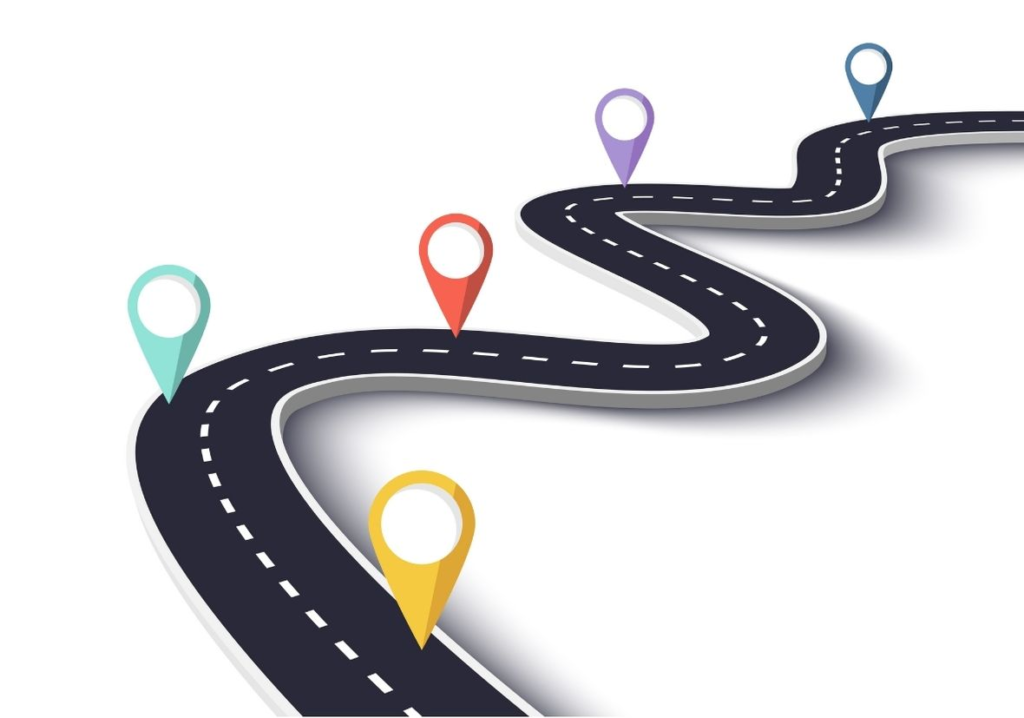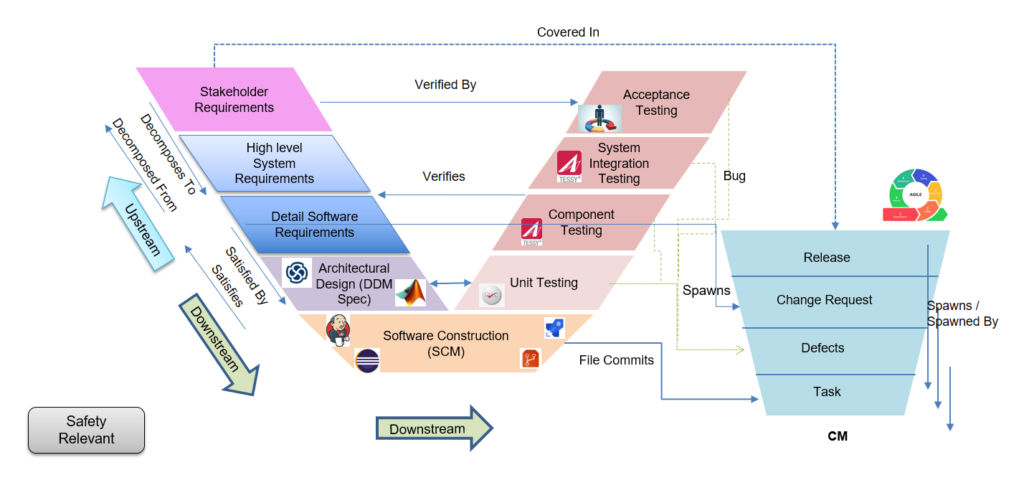Software Roadmap
Software Roadmap for Application Lifecycle Management refers to a comprehensive approach that covers the entire lifecycle of a software application, from its inception to retirement. A software roadmap in ALM outlines the strategic plan for the software development process, including the key milestones, deliverables, and timelines.

Here are the key components of a software roadmap in ALM:
- Vision and Goals: Define the long-term vision and goals of the software project. This includes understanding the problem the software aims to solve and the desired outcomes.
- Requirements Gathering: Identify and gather the functional and non-functional requirements for the software application. This involves understanding the needs of the stakeholders and translating them into specific features and capabilities.
- Release Planning: Break down the software development process into incremental releases or iterations. Define the scope, priorities, and timelines for each release, considering factors like resources, dependencies, and market demands.
- Feature Prioritization: Prioritize the features based on their importance, value, and dependencies. Consider factors like customer needs, business goals, market trends, and technical feasibility.
- Development and Testing: Execute the development activities according to the planned releases and iterations. This includes coding, unit testing, integration testing, and quality assurance processes to ensure that the software meets the defined requirements and quality standards.
- Deployment and Release Management: Plan and execute the deployment of the software to the target environment. This involves coordinating activities like installation, configuration, and testing in the production environment to ensure a smooth release.
- Monitoring and Maintenance: Establish processes for monitoring the performance and usage of the software in the production environment. This includes addressing issues, bug fixes, and performing regular maintenance tasks to keep the software up to date and running smoothly.
- Feedback and Iteration: Gather feedback from users, stakeholders, and monitoring systems to continuously improve the software. Use this feedback to inform future releases and iterations, ensuring that the software meets evolving needs and stays aligned with the overall business goals.
- Retirement and Sunset: Plan for the retirement or end-of-life of the software application. Define strategies for data migration, user communication, and ensuring a smooth transition to alternative solutions or newer versions.
By following a software roadmap in ALM, organizations can effectively manage the entire lifecycle of their software applications, ensuring alignment with business goals, efficient development processes, and successful delivery to end-users.
Software Model
Software models are typically created during different phases of the software development lifecycle, such as requirements analysis, design, and implementation. They help stakeholders, developers, and designers to better understand, communicate, and collaborate on the software system’s various aspects
The V model is a software development and testing approach that emphasizes the relationship between the different phases of the software development life cycle (SDLC) and the corresponding testing activities.
Below is one of the sample representation that explains how the software lifecycle fits into the V model. This will be more explainatory while implementing via ALM tools,

Here are the key phases and corresponding testing activities in the V model:
- Requirements Analysis: In this phase, the system requirements are gathered and analyzed. The corresponding testing activity is Requirements Verification, which involves validating the requirements for clarity, correctness, and completeness.
- System Design: The system design phase focuses on defining the architecture, components, and interfaces of the software system. The corresponding testing activity is the Architectural Verification, which ensures that the system design meets the specified requirements and is structurally sound.
- Module/Component Design: This phase involves designing the individual modules or components of the software system. The corresponding testing activity is the Module/Component Verification, which verifies the design of each module/component and checks for adherence to design specifications.
- Implementation/Coding: In this phase, the actual coding or implementation of the software modules takes place. The corresponding testing activity is the Unit Testing, which verifies the functionality and correctness of each unit/module in isolation.
- Integration: The integration phase focuses on combining and testing the integrated modules or components to ensure they work together as a cohesive system. The corresponding testing activity is the Integration Testing, which verifies the interaction and interfaces between the integrated modules.
- System Testing: This phase involves testing the entire integrated system to validate its compliance with the defined requirements. The corresponding testing activity is the System Testing, which focuses on end-to-end testing, functional testing, performance testing, and other system-level tests.
- User Acceptance Testing (UAT): UAT is performed by end-users to ensure that the software meets their requirements and is ready for production use.
- Operation and Maintenance: This phase involves the deployment of the software into the production environment and ongoing maintenance and support activities. The corresponding testing activities include Regression Testing, Maintenance Testing, and User Support.
![]()
Views: 101





